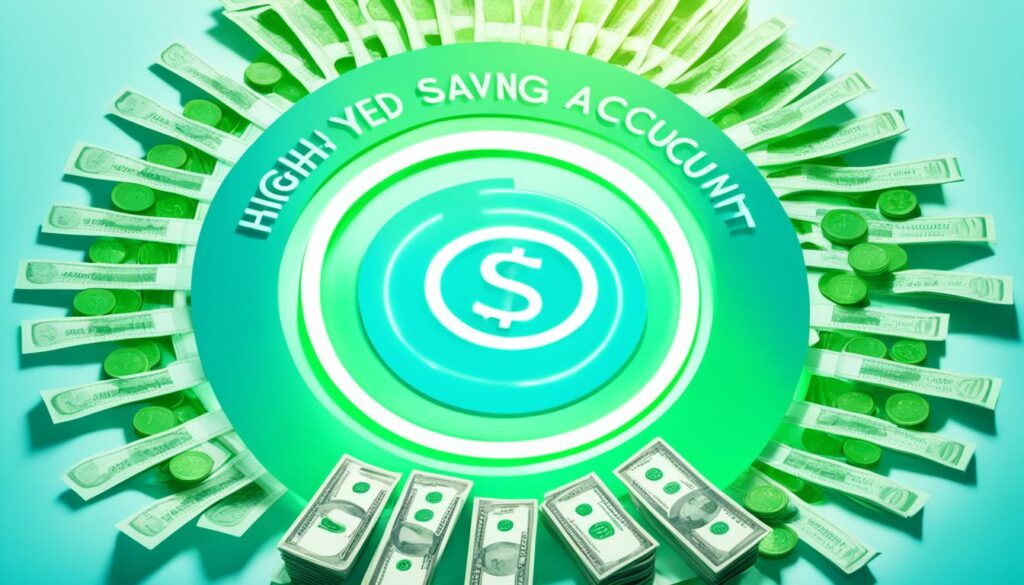Deciding whether to save for an emergency fund or pay off debt can be a difficult decision. On one hand, paying off debt can save money in interest and free up cash flow. On the other hand, not having an emergency fund can leave you vulnerable to unexpected expenses and potentially lead to further debt.
Let’s take a look at Sarah’s story to understand the importance of building an emergency fund during debt repayment:
Sarah, a hardworking professional, had been diligently paying off her student loans for the past few years. She managed to reduce her debt significantly and was proud of her progress. However, she hadn’t prioritized building an emergency fund, assuming she could rely on her credit cards if something unexpected happened.
One day, Sarah’s car broke down, leaving her with a substantial repair bill. She hesitated to put the expense on her credit card, as she knew it would only add to her debt load and accrue more interest. With no emergency fund to fall back on, Sarah had to scrape together the funds, juggling multiple payments and sacrificing her monthly budget.
After this experience, Sarah realized the importance of having an emergency fund during debt repayment. She understood that unexpected expenses can arise at any time, and relying on credit cards or taking on more debt only delays financial progress. Sarah decided to adjust her financial strategy and prioritize building an emergency fund while continuing to make consistent debt payments.
Now, let’s explore when building an emergency fund should be a priority and when paying off debt takes precedence.
Key Takeaways
- Building an emergency fund during debt repayment is crucial to avoid further debt in case of unexpected expenses.
- Having an emergency fund provides financial security and peace of mind during challenging times.
- Consider your personal financial situation when deciding whether to prioritize debt repayment or emergency fund contributions.
- Having both an emergency fund and being debt-free are important long-term financial goals.
- Create a realistic budget to determine how much you can allocate toward building your emergency fund and paying off debt.
When Your Emergency Fund Should Be a Priority
An emergency fund is crucial for financial stability and should be a priority, especially if you don’t have one in place. It serves as a safety net to cover unexpected expenses without relying on high-interest debt, protecting you from potential financial crises.
Having an emergency fund can help you navigate through unforeseen challenges, such as job loss or medical emergencies, without the need for drastic measures like eviction, car repossession, or utility disconnection. By having a dedicated fund for emergencies, you can avoid falling into a cycle of debt and maintain stability in times of uncertainty.
| Importance of an Emergency Fund | Consequences of Not Having an Emergency Fund | |
|---|---|---|
| 1 | Protects against unexpected expenses | Forces reliance on high-interest debt |
| 2 | Provides financial security during job loss | Risks eviction due to missed rent payments |
| 3 | Helps prevent car repossession | Puts utility disconnection at bay |
Building an emergency fund gradually is crucial for long-term financial health. By setting aside a portion of your income specifically for emergencies, you’ll be better equipped to handle unexpected events without derailing your overall financial goals.
When Paying Off Debt Should Be a Priority
Paying off debt should be a priority in certain situations, especially when you have immediate obligations like a mortgage or auto loans. These types of debts are essential for maintaining a stable living situation and should not be overlooked. By prioritizing debt repayment, you can ensure that you meet your financial obligations and avoid potential consequences.
In addition to essential debts, it’s important to focus on paying down high-interest and “bad” debt. These debts often come with high-interest rates that can drain your income and hinder your ability to save money. By tackling high-interest debt, you can free up funds for building an emergency fund and working towards your financial goals.
For example, credit card debt is a common type of high-interest debt that can quickly accumulate if only the minimum payment is made each month. By prioritizing the payoff of credit card debt, you can reduce the amount of interest paid over time and work towards eliminating this burden from your finances. This approach allows you to make progress towards your financial goals while simultaneously improving your overall financial health.
“The debt payoff journey can be challenging, but by prioritizing your debts and focusing on those with immediate obligations or high interest rates, you can make significant progress towards your financial goals.”
When deciding whether to prioritize debt repayment or allocating funds towards an emergency fund, consider the interest rates and immediate obligations attached to the debt. By understanding your financial situation and making informed decisions, you can strike a balance between reducing debt and building your emergency fund.
Examples:
| Debt Type | Interest Rate | Immediate Obligation |
|---|---|---|
| Mortgage | 3.5% | Immediate obligation for maintaining housing |
| Auto Loan | 4.2% | Immediate obligation for transportation |
| Credit Card Debt | 20.99% | High-interest debt draining income |
By prioritizing debt repayment in these situations, you can improve your financial stability and reduce the burden of high-interest debt. Once your immediate obligations are met and high-interest debt is under control, you can then focus on building your emergency fund and working towards your financial goals.
When You Might Use Your Emergency Fund to Pay Off Debt
While building an emergency fund should generally be a priority, there may be circumstances where using your emergency fund to pay off debt can be considered. If your emergency fund has grown with interest and exceeds three to six months’ worth of expenses, you could potentially allocate some of the extra funds towards paying off higher-interest debt.
By using your emergency fund to pay off debt, you can reduce the amount of interest you would have paid over time. This can help you save money and get out of debt faster. However, it’s essential to approach this strategy cautiously and evaluate the risk involved.
Depleting your emergency fund to pay off debt puts you at risk of not being able to cover unexpected events. Unexpected expenses can arise, such as medical emergencies or car repairs, which you may need your emergency fund for. It’s crucial to consider how you would handle these situations if your emergency fund is significantly reduced.
Remember: one of the main purposes of an emergency fund is to provide a safety net during unexpected events.
Plan for the Potential Fallout
If you decide to use your emergency fund to pay off debt, it’s important to have a plan in place. Consider the following steps:
- Assess the amount of debt you plan to pay off with your emergency fund. Calculate the potential interest savings and the impact it will have on your monthly budget.
- Review your current financial situation and determine how comfortable you are with the reduced emergency fund. Assess the potential risks and create a backup plan.
- Explore alternative options, such as applying for an emergency loan, to have a safety net in case unexpected events occur after depleting your emergency fund.
- Revisit your budget and savings plan to rebuild your emergency fund as soon as possible.
By having a plan for the potential fallout, you can make more informed decisions about using your emergency fund to pay off debt. It’s important to strike a balance between debt repayment and maintaining a sufficient emergency fund to protect yourself from unforeseen circumstances.

How to Start Building Your Emergency Fund
To start building an emergency fund, it is crucial to create a budget that allows you to determine how much you can allocate toward savings. Experts often recommend saving about 20% of your income, but this percentage can vary based on individual circumstances and financial goals.
One important step in building an emergency fund is setting a specific goal for its size. Typically, it is recommended to save three to six months’ worth of expenses. This amount provides a solid safety net in case of unexpected events or financial hardships.
Starting small and setting achievable milestones can be an effective strategy. By breaking down your savings goal into smaller targets, you can track your progress and maintain motivation. Celebrate each milestone reached, which will encourage you to keep going.
One way to make your emergency fund work for you is by storing it in a high-yield savings account. These accounts offer higher interest rates compared to traditional savings accounts, allowing your savings to grow over time. Additionally, high-yield savings accounts provide easy access to your funds when needed.
Benefits of a High-Yield Savings Account
Choosing a high-yield savings account offers several advantages:
- Competitive interest rates: High-yield savings accounts typically offer higher interest rates than regular savings accounts, meaning your emergency fund can grow faster.
- Liquidity: These accounts allow for easy and immediate withdrawal of funds without any penalties or restrictions.
- Security: Your money is insured by the Federal Deposit Insurance Corporation (FDIC) up to the maximum limit, providing peace of mind.

By implementing budgeting strategies, setting realistic goals, and utilizing high-yield savings accounts, you can begin building your emergency fund effectively. Remember, everyone’s financial situation is unique, so it is important to adjust your approach based on your specific needs and circumstances.
How Can I Balance Building an Emergency Fund and Repaying Debt with the Debt Snowflake Method?
When trying to balance building an emergency fund and repaying debt with the debt snowflake method, it’s important to prioritize a strategy that can maximize savings with debt snowflake. By consistently applying small, extra payments towards your debt while also setting aside a portion of your income for emergencies, you can achieve a healthy financial balance.
How Can I Balance Building an Emergency Fund with Repaying Debt?
Balancing building an emergency fund with repaying debt is essential for financial stability. To achieve this, consider setting aside a small portion of your income for both purposes. Utilize effective debt repayment tips like budgeting, cutting expenses, and increasing your income to pay down debt while still saving for unexpected expenses.
Conclusion
When it comes to money management, finding the right balance between debt repayment and building an emergency fund is crucial. Both aspects play a vital role in achieving financial stability and meeting long-term goals.
While debt repayment should always be a priority, neglecting the importance of an emergency fund can leave individuals vulnerable to unexpected expenses and further debt. It’s essential to establish a safety net that can cover unexpected events and provide peace of mind during difficult times.
Creating a realistic budget is the first step towards achieving this balance. By carefully assessing income and expenses, individuals can determine how much they can allocate towards both debt repayment and emergency fund savings. Prioritizing saving goals and setting aside a portion of income for emergencies can go a long way in avoiding future financial stress.
Ultimately, effective financial management requires informed decision-making and a commitment to maintaining both debt repayment and emergency fund contributions. By striking the right balance through budgeting and setting achievable saving priorities, individuals can pave the way for a secure financial future.
FAQ
Should I prioritize building an emergency fund or paying off debt?
Balancing both is important, but generally, building an emergency fund should be a priority. It helps cover unexpected expenses and provides a safety net during financial difficulties.
When should an emergency fund be a priority?
An emergency fund should be a priority when you don’t have one in place. It helps cover unexpected expenses and prevents resorting to high-interest debt.
When should paying off debt be a priority?
Paying off debt should be a priority when you have immediate obligations such as mortgage or auto loans. Additionally, high-interest “bad” debt that prevents saving should be prioritized.
Can I use my emergency fund to pay off debt?
Using your emergency fund to pay off debt can be considered if it’s growing with interest and exceeds three to six months’ worth of expenses. However, this should be done cautiously, as depleting your emergency fund puts you at risk of not being able to cover unexpected events.
How do I start building my emergency fund?
To start building an emergency fund, create a budget to determine how much you can allocate toward savings. Set a goal for your emergency fund size and start with achievable milestones. Store your emergency fund in a high-yield savings account for growth and accessibility.

